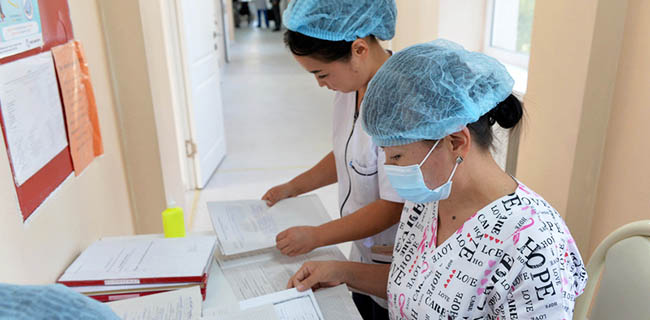Belarus, an Eastern European country with a population of 9.3 million people[1], borders Poland, Lithuania, Latvia, Russia, and Ukraine. Belarus has retained most features of the Soviet Semashko health system model, which is based on principles of public financing and universal access to health care. Health services are provided free-of-charge at the point of care through mostly state-owned facilities and are organized hierarchically and geographically[2]. The extensive entitlements for Belarusians to health care are guaranteed by the constitution, which defines the health system as universal[2].
Belarus is an upper-middle income country and has spent around 5-6% of GDP on health since 2005, reaching 6.4% in 2020[1]. The health system is mainly funded through general taxation, and most revenue is raised at the local level. Most taxes are collected from public enterprises rather than payroll contributions[2]. Current health expenditure per capita doubled from Int$ 589 in 2005 to Int$ 1286 in 2020. This is 30% above the average of Int$ 984 international dollars in 2020 in the Commonwealth of Independent States (CIS). Belarus’s strong commitment to universal health coverage means that its people have some of the lowest out-of-pocket spending across the CIS – 25% in 2020. The CIS average remains twice as high at 50 percent for the same period[1]. Out-of-pocket payments are typically used to buy pharmaceuticals, dental care, and some private services[2].
Reform path: predictable incremental changes
The central government sets national health priorities, while regional and district administrations oversee the structure and implement the funding of primary and secondary care at the local level. The Ministry of Health (MOH) has overall responsibility for the system, including policymaking, and directly funds tertiary services. Efforts have been made to empower local health care administrations – by transferring some functions from MOH. The privatization of health care facilities and delegation of regulatory functions to nonstate bodies were moderate[2]. In 2023 , 64% (3450 of 5407) of health care facilities are public, and 36 % are private[3].
Belarus implemented new policies in incremental changes rather than radical reforms. Capitation funding was introduced in some areas, and there have been consistent efforts to strengthen primary care[2]. In the 2021-2025 period, the country is gradually implementing pay-for-performance financing for outpatient care within capita budget limits and diagnostic-related group (DRG) financing for inpatient care to achieve more efficient health financing[4]. A recent health system modernization project funded by the World Bank aimed at creating a central e-health software platform, among other objectives, was partially implemented and suspended by the lender[5]. MOH’s next steps include introducing national accreditation of health care organizations and developing e-health services[4].
References
- Global Health Expenditure Database. Geneva: World Health Organization, accessed April 11, 2023
- Richardson, E., Malakhova, I., Novik, I., & Famenka, A. (2013). Belarus: health system review. Health systems in transition, 15(5), 1–118, accessed April 11, 2023
- Ministry of Health care of Belarus. Health services oversight. News from March 16, 2023, accessed April 11, 2023
- Ministry of Health care of Belarus. Work Plan of the Ministry of Health of the Republic of Belarus for 2023, accessed April 11, 2023
- The World Bank. Belarus Health System Modernization Project (P156778). Implementation Status & Results Report, accessed April 11, 2023



